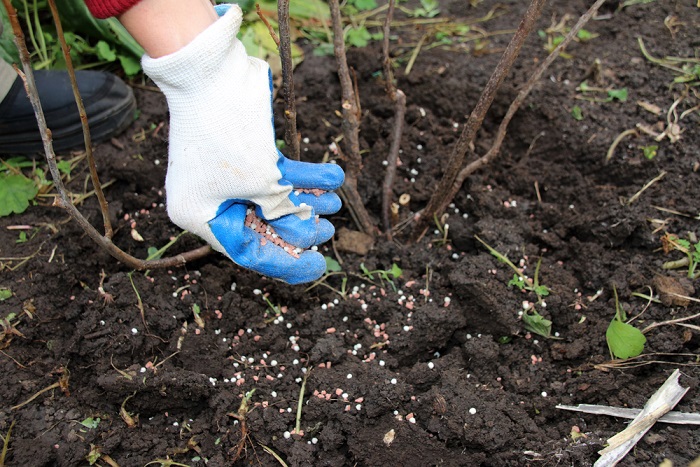The subtleties of growing Tibetan rose-leaved raspberries in the country
Content
Description of culture
The Tibetan raspberry (Rubus Illecebrosus) came to our region from Japan, although in some botanical reference books North China is indicated as the birthplace of the plant. Some gardeners call it a hybrid of raspberries, strawberries and blackberries. However, this assumption is wrong. Tibetan raspberries, popularly known as rosaceous, Chinese, Japanese, Thai, strawberry, seductive and rosaline, are a wild South Asian berry shrub.

Decorative qualities
The exotic shrub reaches a height of 30–70 cm. The plant is characterized by a spherical crown shape. A distinctive feature of rose-leaved raspberry is studded flexible shoots. Harvesting and caring for shrubs is challenging, as small and thorny thorns can injure hands.
The leaves have a deep green color with a rough surface. The shape of the leaf plate is elongated, the edges are carved.
During the flowering period, delicate white-cream inflorescences appear on the tops of thorny shoots. The average flower diameter is 4 cm. At the end of flowering, berries are formed. The fruits of Tibetan raspberries are large - they can reach 5 cm in diameter. They have an oblong obovate shape. The color of ripe berries changes from soft coral to bright red.
Tibetan raspberry fruits are formed at the tops of the shoots. Highly located single berries adorn an exotic shrub.
Fruiting and productivity
Rosaline is characterized by a long fruiting period. Berry crops can bear fruit and bloom at the same time. The first harvest is collected in the second decade of July. Shrub bears fruit until the first severe frosts.
At the same time, the plant cannot be called highly productive. The average yield from one adult shrub is no more than 1 kg of berries that have reached technical maturity.

Taste qualities and useful properties
Few people like the juicy pulp of zemmaline. Sweet and sour taste with a slight bitterness - not for everybody. For this reason, rose-leaved raspberries are not suitable for fresh consumption.
In fairness, it is worth noting not only the decorativeness of the shrub, but also its useful properties. The bright berries of Japanese raspberries contain pectins, which help to normalize the digestive system.
Fruits rich in vitamins and various microelements strengthen the immune system, normalize metabolic processes, increase the level of hemoglobin in the blood and remove from the depressive state. Sour berries increase the body's resistance to colds and viral diseases.
Cooking applications
Strawberry raspberries are widely used in modern cooking. Ripe and frozen berries can be used to make juices and compotes, preserves, jams and marmalades, berry marshmallows and marmalade. Tempting berries look no less interesting as decorations for desserts and ice cream. Zemmaline is often added to fruit and berry pies and cupcakes.
The sour taste makes it possible to use the fruits of Tibetan raspberries in salads and various vegetable dishes. The berries, ground with sugar, combine the aromas of strawberry and pineapple. Therefore, they are often used to make homemade wine.
The sour fruits of zemmalins have no particular contraindications. Diabetics and people prone to allergic reactions are at risk.

Use in landscape design
Due to its high decorative qualities, rose-leaved raspberry has found application not only in cooking, but also in landscape design. Shrubs planted along fences and fences serve as hedges.
A powerful and rapidly developing root system allows the use of fruit and berry bushes to strengthen the slopes.
Video "Acquaintance with Tibetan raspberries"
This video shows the decorative characteristics of the shrub.
Advantages and disadvantages of Tibetan raspberries
Exotic berry culture has many advantages. But unfortunately, the plant also has some disadvantages.
- high decorative characteristics;
- resistance to insect invasions;
- excellent winter hardiness (up to -29 ° C);
- application in landscape design and landscaping.
- low productivity;
- short lying period;
- poor transportability;
- specific taste of berries;
- difficulties with harvesting.
General advice for growing
Having got acquainted with the shrub, let's move on to the issue of its cultivation. After all, it is the correct planting and proper care that guarantees the active growth and development of the plant.

Landing rules
Finding Tibetan raspberry seedlings on the free market is not an easy task. Most often, you can buy high-quality planting material in gardening nurseries.
High vital energy allows the shrub to survive both in the active sun and in partial shade. Rosaline takes root well in loamy soil. Excess moisture is detrimental to the berry culture. When choosing a landing site, it is better to give preference to sloping terrain.
You can propagate the culture by cuttings, layering or dividing the bush. But it is better to plant seedlings by the bush or trench method, observing a distance of 1–1.5 m between rows.
Irrigation and fertilization
According to experienced gardeners, Tibetan raspberries are easy to care for. In the dry season, the shrub is watered daily. In wet weather, the frequency of watering is less intense. For irrigation, use settled water. The plant loves evening watering.
Since the root suckers are located close to the surface of the earth, soil loosening is not carried out. Weeds breaking through to the outside are removed manually.
To increase the viability, rosalins are fed twice a season: immediately after the snow melts and at the end of the growing season. For the first feeding, ammonium sulfate is used, for the second - potassium sulphide.

Shrub pruning
One of the most important stages of exotic care is pruning. During the growing season, the bush requires periodic thinning. From time to time, you need to remove excess shoots. In the fall, pruning is carried out at the root.
Preparing for winter
A shrub cut at the root can not be covered for the winter. In regions with a mild climate, the plant hibernates without additional insulation.Raspberries grown in the central and northern regions are sprinkled with opal foliage and dry river sand. The top is covered with medium density agrofiber.
Prevention and control of pests and diseases
When not properly cared for, rosaline suffers from chlorosis, anthracosis, mottling, rust, yellow mosaic, and root cancer. For the treatment of berry bushes, a solution of copper sulfate, drugs "Karbofos", "Alatar", "Actellik" and "Detoil" are used.
For invasions of raspberry aphids, strawberry weevils and raspberry beetles, a solution of Bordeaux liquid is used.
- Raspberry beetle
- Raspberry aphid
- Raspberry-strawberry weevil
Gardeners' reviews about Tibetan raspberries
“The rose-leaved raspberry planted several years ago grows abundantly, clogging up other fruit and ornamental plantations. Therefore, the shrub must be thinned out frequently. "
“I have been growing Tibetan raspberries for several years. During this time, I managed to appreciate the unpretentiousness of the shrub in the care and its decorative qualities. Juicy berries help the whole family to strengthen the immune system and resist colds. I recommend for growing. "
Tibetan raspberries can be a worthy decoration for your garden plot. At the same time, the plant not only diversifies the design of the garden, but also delights with the harvest of useful berries.



